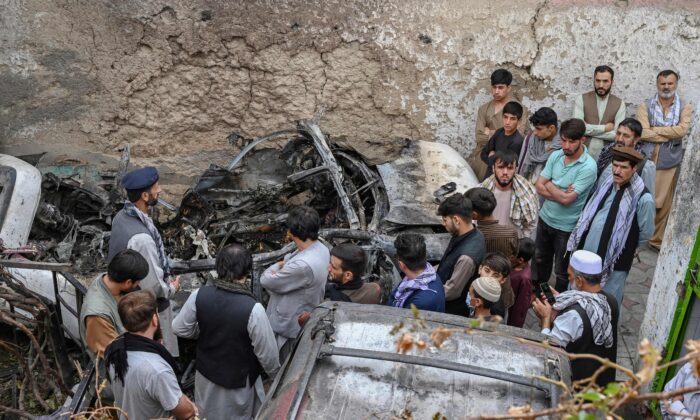
U.S. military continued to bomb Afghanistan after the Taliban struck a deal with the Trump administration in February 2020 to end the two-decade war, according to newly declassified airstrike data.
data, released Nov. 17 by Air Force Central Command (AFCENT), is the first government release of information on Afghanistan airstrikes since March 2020. Air Force reportedly cited diplomatic concerns at the time, “including how the [airstrike] reports could adversely impact ongoing discussions with the Taliban regarding Afghanistan peace talks”.
According to the data, AFCENT conducted 413 airstrikes in Afghanistan from March-December 2020, following Trump’s February 2020 agreement with the Taliban to withdraw U.S. troops. That rate is lower than the 247 strikes conducted in the year’s first two months, but higher than what many observers thought would occur.
“This [agreement] did not explicitly commit the US to a full ceasefire, but involved the Taliban effectively committing not to attack American forces in Afghanistan during a proposed 14-month US withdrawal period. It was also assumed that US strikes would also significantly wind down, and be focused primarily on self-defense actions,” the watchdog Airwars said in its analysis of the information.
“Yet the newly released AFCENT data shows U.S. attacks never ceased.”
AFCENT conducted another 372 airstrikes in 2021. Most of the strikes, 226, were fired in the remaining three months of American occupation as the Biden administration tried to stave off collapse of the Afghanistan government.
Pentagon press secretary John Kirby said at a Dec. 17 press conference that “there have been no airstrikes in Afghanistan since the withdrawal is complete” on Aug. 30.
Airwars said the data reveals that the Biden administration bombed Afghanistan more times than previously thought.
“Airwars has been cautioning for some time that recent airstrike numbers for Afghanistan—if revealed—might show far more US military activity under Joe Biden than many had assumed,” said Airwars director Chris Woods in a press release. “This newly released data—which should never have been classified in the first place—points to the urgent need for reevaluation of recent U.S. actions in Afghanistan, including likely civilian casualties.”
Along with revealing that the U.S. bombing campaign in Afghanistan continued throughout 2020 and 2021, the data also implicates the United States in more civilian deaths than previously thought, according to Airwars.
non-profit watchdog, launched in 2014 to track civilian harm in conflict zones, noted that 341 civilians were killed that year by airstrikes in 2020. During that time, it was thought that fighting between the Taliban and the Afghanistan government was mostly responsible for the deaths, Airwars said.
According to Airwars, United Nations officials said in 2020 that “they believed Afghan Air Force strikes were now likely responsible for almost all civilian deaths from airstrikes.”
“ release of the previously-classified data from AFCENT radically changes that picture … In fact, we now know, more than 370 ‘international’ strikes were carried out in 2021, which between them dropped more than 800 munitions,” Airwars said.
Pentagon press secretary Kirby announced last week that no U.S. troops will be punished for the final U.S. airstrike that killed Afghan civilians—the botched Aug. 29 bombing that officials originally claimed took out an “imminent ISIS-K threat” to the airport in Kabul.
“What we saw here was a breakdown in process, and execution in procedural events, not the result of negligence, not the result of misconduct, not the result of poor leadership,” Mr. Kirby told reporters Dec. 13. “So I do not anticipate there being issues of personal accountability to be had with respect to the August 29 airstrike.”
newly declassified AFCENT data comes as U.S. airstrikes face increased scrutiny. After years of Freedom of Information Act (FOIA) litigation, New York Pezou released hundreds of Pentagon confidential assessments of reports of civilian casualties resulting from U.S.-led airstrikes in Iraq and Syria on Dec. 18.
Dubbed the “civilian casualty files,” the trove of documents reportedly show rampant intelligence failures and other issues that contributed to more than 1,300 reports of civilian casualties.
Neither AFCENT nor the United Nations Assistance Mission in Afghanistan, which tracks civilian deaths, responded to inquiries from Pezou about the Airwars analysis.
Pezou : US Bombing in Afghanistan Continued After Trump’s Deal With Taliban